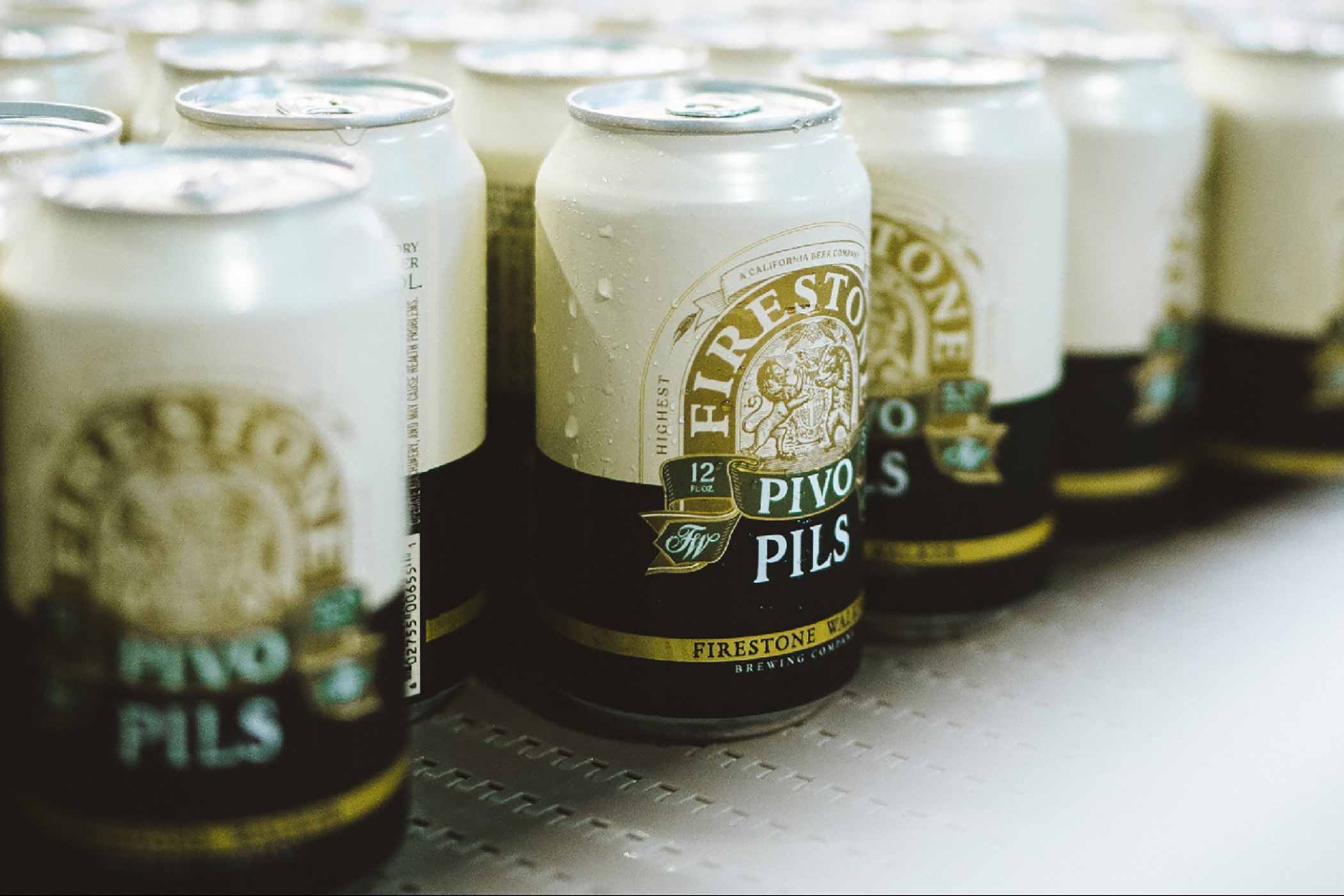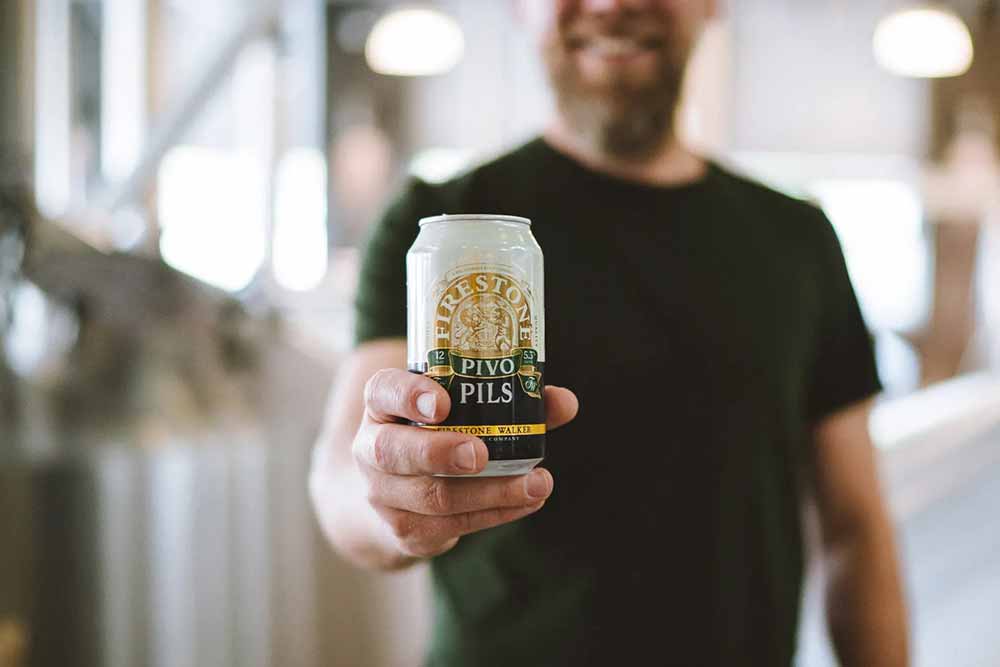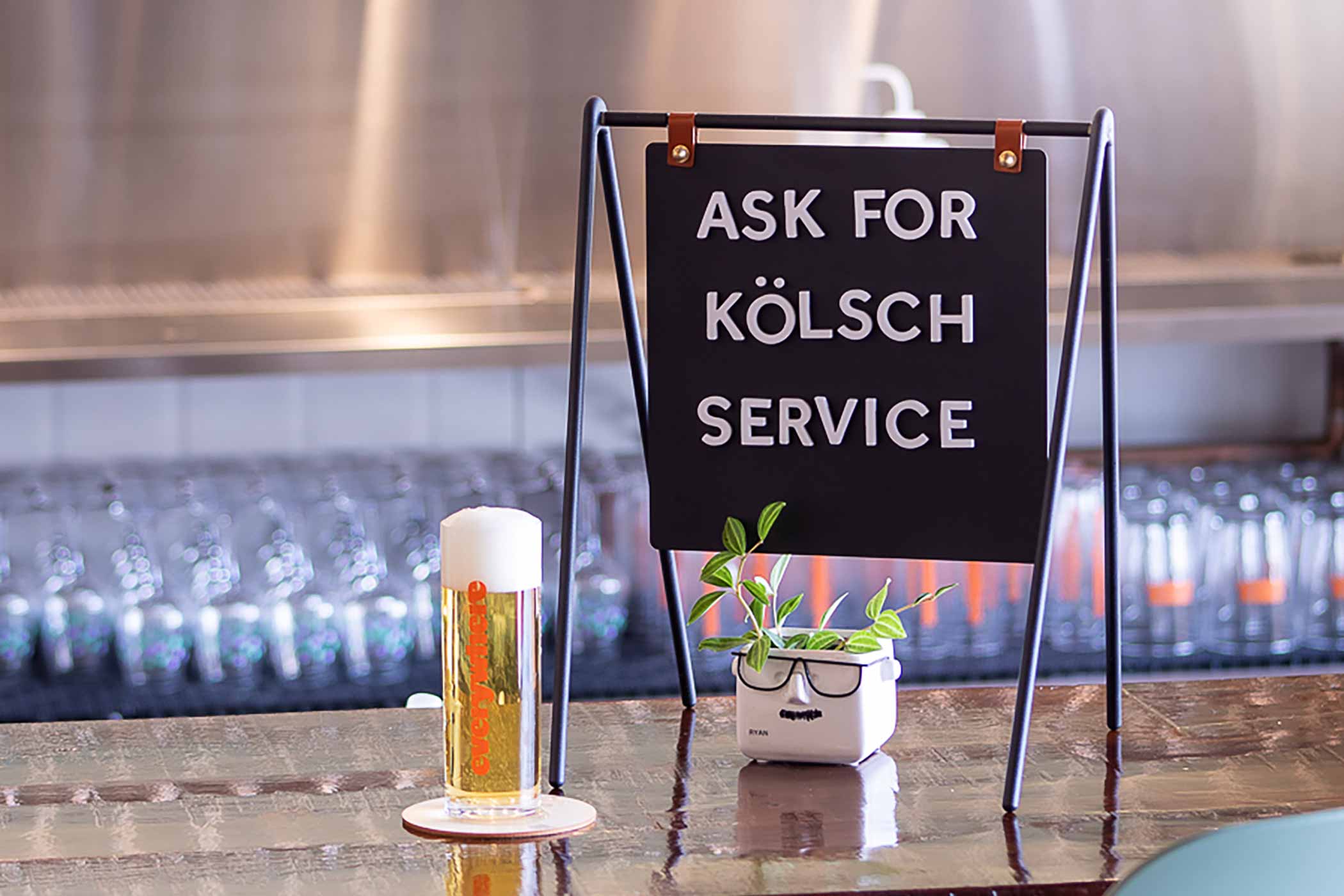Shop
What Is an Italian Pilsner?
Yes, the Italians make more than just pizza and wine.
Looking for More?
The humble pilsner can seem simple, but beneath those golden ripples and frothy head is a beer that can be cunningly complex. Ask around, and brewers will tell you that the pilsner is one of the trickier beer styles to brew. Born in the town of Pilsen in what is now the Czech Republic, the pilsner has traveled around the world, with many different cultures putting their stamp on the style. German pilsners are known for being lighter and slightly hoppier. American pilsners ride the middle with malt and focus more heavily on the hops. More recently, the Italian pils has become known for its light body and the addition of a dry-hopping process that imparts a subtle European hop character. But what is an Italian pilsner, exactly?
Technically, the style was an accident. But it turned out to be a very happy accident.
The History of the Italian Pilsner
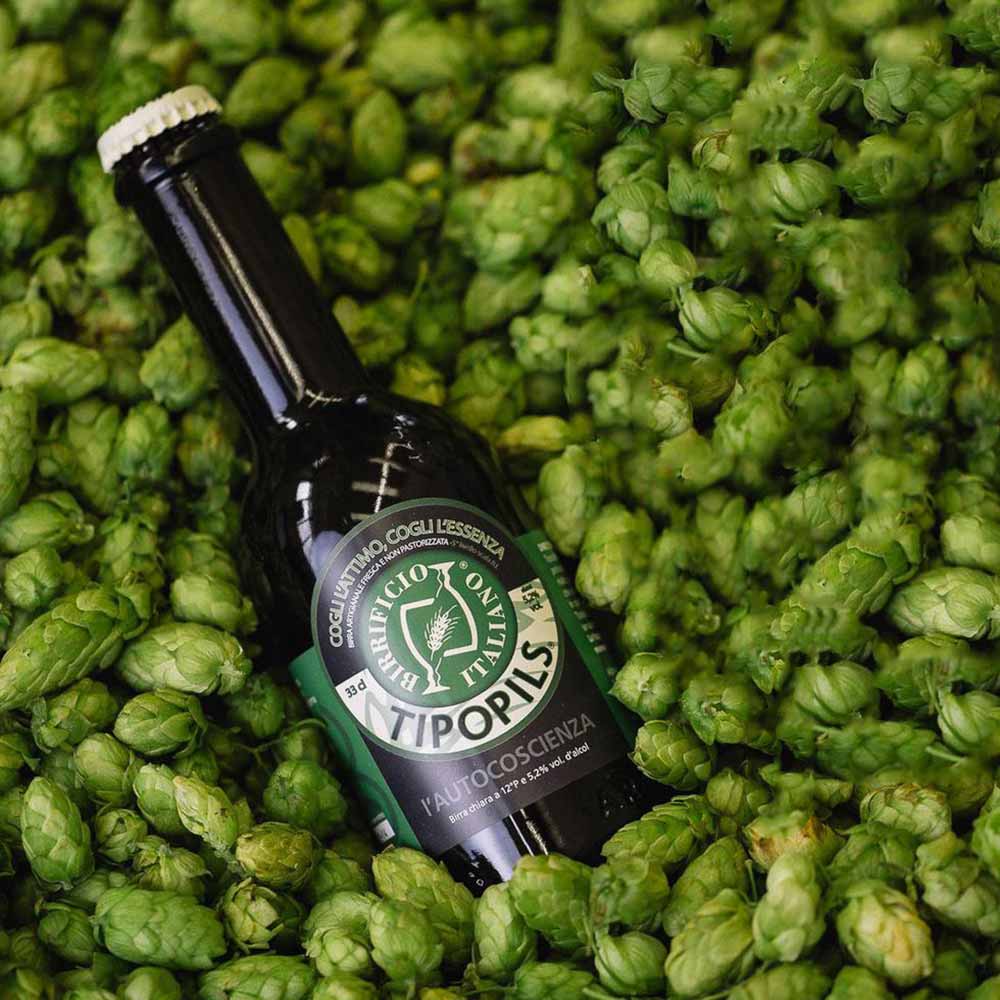
Photography courtesy of www.andygrabo.de
In 1996, Agostino Arioli—founder of a brewery in Como, Italy, called Birrificio Italiano—set out to make a northern German pilsner. Fond of the style at the time, Arioli strove to brew something similar to a Jever Pils from Saxony’s Friesisches Brauhaus zu Jever. However, the final result created something new.
Failing to brew what he considered a “real” pils, Arioli veered in a different direction. Naming the beer Tipopils, or “kind of pils” in Italian, Arioli used a technique from his brewing brethren to the north: England. By putting Tipopils through an English cask dry-hopping process, Arioil added small amounts of hop pellets to the beer, imparting Old World hop flavor into an unfiltered pilsner.
Voila: the Italian pilsner.
How Did the Italian Pilsner Come to America?
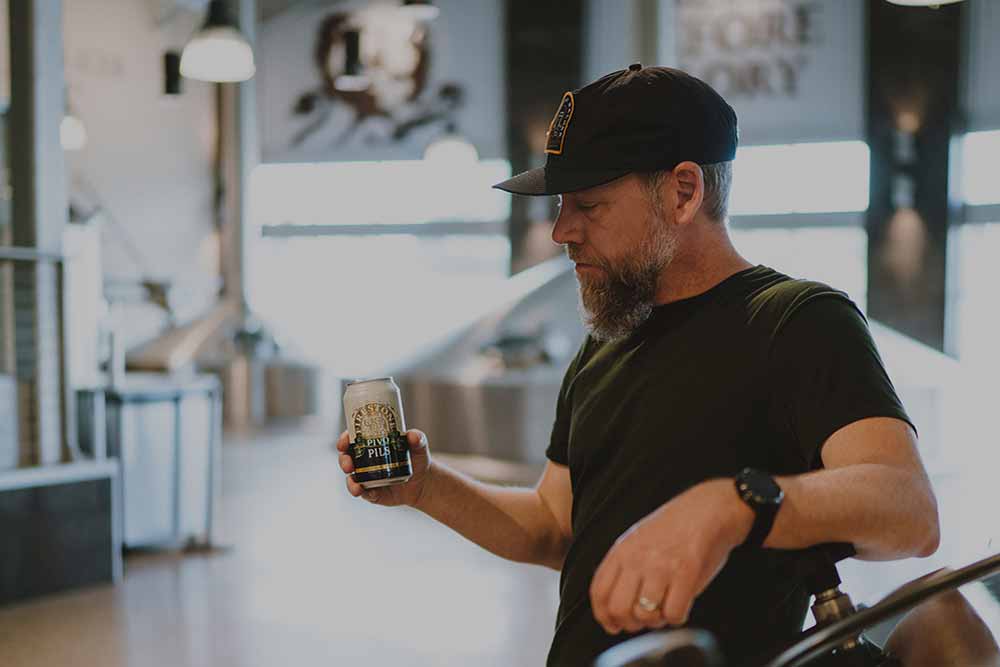
Photography courtesy of Firestone Walker
In America, we can trace the rise of the Italian pilsner to one specific brewer: Matt Brynildson, brewmaster at Firestone Walker in Paso Robles, CA. When overseas at the European Beer Star (EBS) competition, Brynildson tried Tipopils for the first time.
“Here was this super passionate dude standing by his beer, just proud as could be and open to talking about how he made his beer,” says Brynildson. “I met him and fell in love with his beer, his enthusiasm, and his passion. In typical Italian style, everything had an exclamation point at the end. We were instantly best friends.”
After tasting Arioli’s beer, Brynildson returned home and wrote the recipe for Pivo Pils.
“I would say Ago’s beer is as influential—if not more so—than any of the German pilsners I had,” says Brynildson. “Ago is the king who started it all.”
With Pivo Pils, Brynildson put his spin on the style. He added a touch of dry hopping with Saphir to differentiate it from other Italian pilsners, about a third of a pound per barrel.
“Saphir in Germany is a very noble hop, no doubt, but it has a little lemongrass note, which is a cool, distinctive twist,” says Brynidlson.
Dry hopping is the big differentiator in Italian pilsners, with Noble hops imparting a characteristic aroma and bitterness. Traditionally, Arioli used hops such as Tettnang Tettnanger in Tipopils, while others used Spalter Select or Hallertau Mittelfrüh.
But in a grand flourish to this story, Arioli switched to brewing with Saphir after he tasted Pivo Pils.
“I actually influenced the influencer!” says Brynildson. “It’s the highest compliment I’ve ever been paid.”
The Rise of the Italian Pilsner
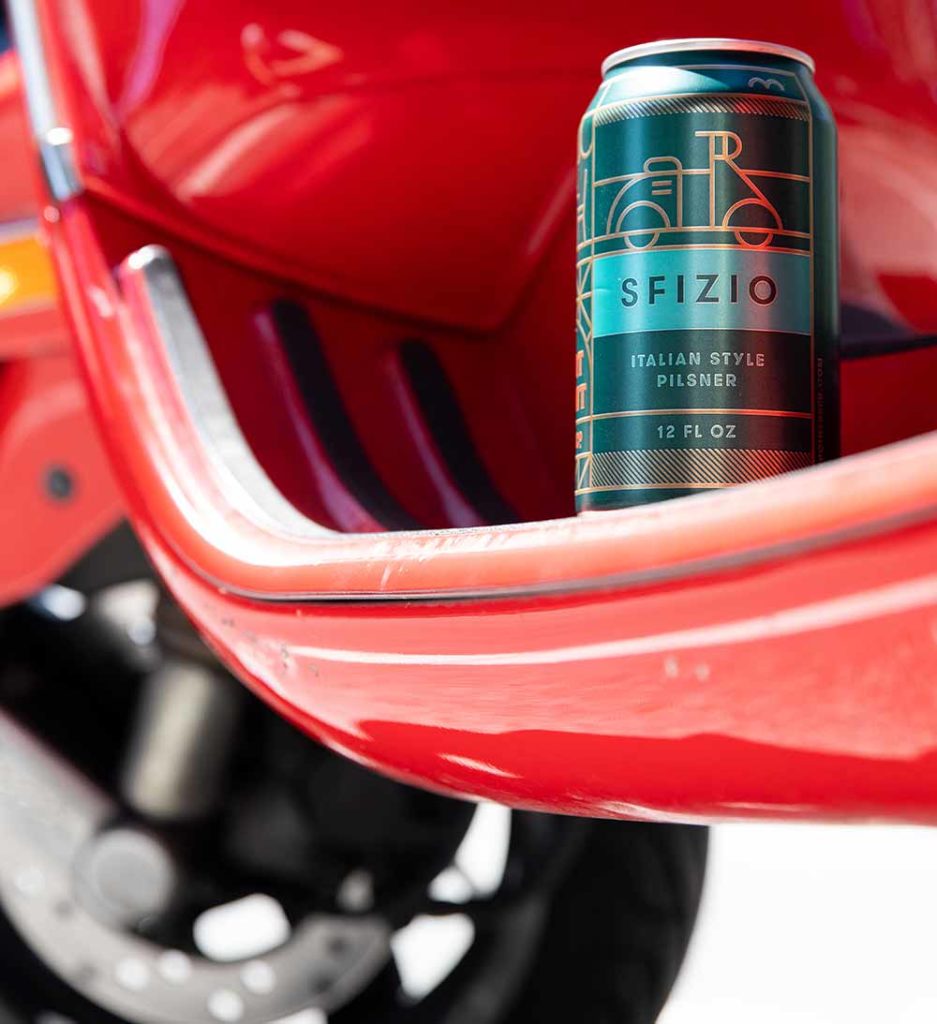
Photography courtesy of Sarah Chorey | Fort Point Beer Co.
As Brynildson notes, “Every brewer that visits, all they want is Pivo.” However, the Italian Pilsner style has been slow to catch on among the general public. Still, Brynildson and Arioli have worked hard to increase its popularity.
In Italy, Arioli started a festival called Pils Pride, which he wanted to bring to the States. He partnered with Tim Adams, founder of Oxbow Brewing in Portland, ME, who makes a version of an Italian pilsner called Luppolo. Renamed Pils & Love, the festival made its stateside debut in 2017 with fifty-some pilsners.
“It was basically heaven on earth for a brewer,” says Brynildson, who asked Arioli if Firestone Walker could have the honor of bringing the fest out to the West Coast the following year.
FIn the past, the pilsner-loving festival has taken place in Portland and Paso Robles. Led by the efforts of brewers like Arioli, Brynildson, and Adams, the Italian pilsner has caught on at other breweries from coast to coast, including Mike Schnebeck, director of innovation at Fort Point Beer Co. in San Francisco, CA.
“Whoa, this is really cool,” Schnebeck remembers thinking after trying a Wayfinder, Heater Allen, and Modern Times collab called Terrifica and a local Italian pilsner from Von Ebert Brewing called Agostini. “Drinking through those two, I thought, ’This is a really good style that would fit in our lineup.’”
Just as Brynildson returned home from Italy and wrote the recipe for Pivo Pils, Schnebeck returned from the Pacific Northwest and began experimenting with an Italian pilsner. In May 2020, Fort Point released Sfizio to complement some of its lighter beers like KSA and Export Dortmunder Lager.
What is the Profile of an Italian Pilsner?
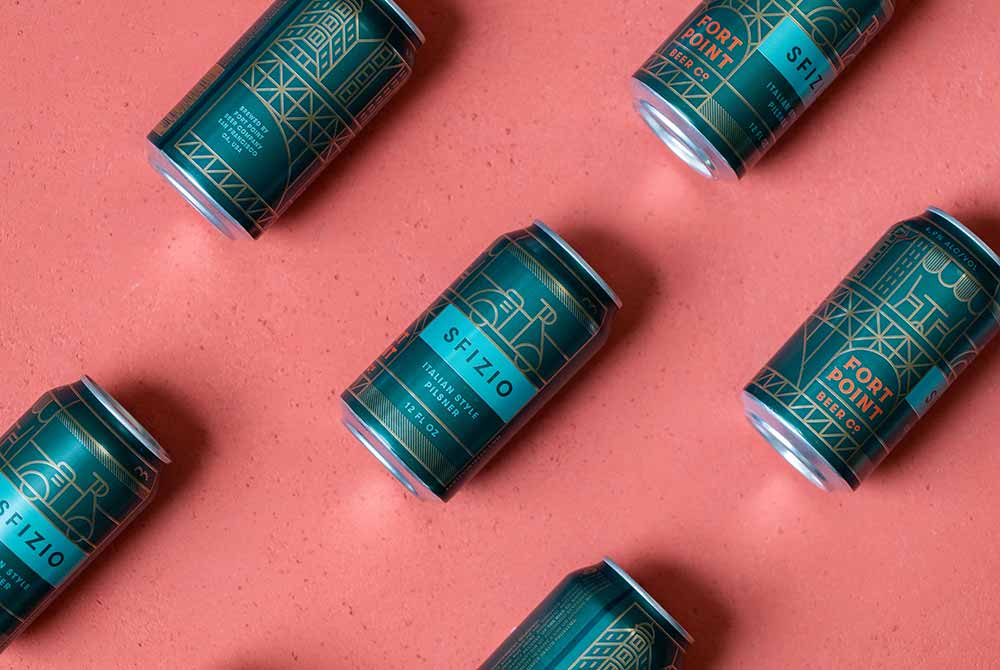
Photography courtesy of Fort Point Beer Co.
Ranging between 4% and 5.5% ABV, Italian pilsners are light in color, clean in body, unfiltered, and defined by dry hopping.
For purveyors of the style, European hops are encouraged. The New World American hops popular in IPAs—Simcoe, Cascade, Chinook, Galaxy, and others—are too aggressive in Italian pilsners, imparting a bit too fruity for this delicate beer.
“It’s a German-style pilsner with a little bit of dry hop that focuses exclusively on Noble hop varieties,” says Schnebeck. “The hop flavor component is a key distinction in the style versus just a hopped pilsner. Just adding that little extra pop of that grassy, herbal aroma.”
And that’s the key to an Italian pilsner: balance and subtle complexity that a seemingly incongruous technique adds to an already established style.
For Brynildson, a perfect Italian Pilsner is about restraint and balance.
“When I crack a can of [Italian] pilsner and smell, then I can tell right away, oh yeah, they got it … they got the right hop-to-yeast balance,” he says. “A fresh pilsner always has a touch of sulfur, but more like a burnt match [aroma] that tells you it’s fresh and well-made.”
Furthermore, nailing the bitterness profile is an essential characteristic of this style. In addition to Saphir in the dry hop, Brynildson uses Hallertau Mittelfrüh or Spalter Select in a bittering and mid-boil hop addition to add that distinctive bitterness.
“No matter how you get there, you’re looking for this bitterness that begs another sip but doesn’t come across as astringent,” says Brynildson.
Lastly, honing in on that lagering timing is crucial.
“Most lager brewers will tell you the hardest thing to nail and [the thing that] takes the most time is getting in tune with a good lager fermentation profile,” says Brynildson. “Getting in tune with lager yeast is so critical to making these beers right.”
All these attributes have contributed to an exceptional style.
“What I really love about [Italian pilsners] is that they introduce people to a whole other spectrum of hop flavors they might miss out on because people are so focused on tropical hazy IPAs,” says Schnebeck. “It’s a cool middle ground.”
The Italian pilsner almost toes the line between two styles: It presents pungent aromas with a slight bitterness like an IPA but is more refreshing and definitely easier to drink.
The Future of the Italian Pilsner
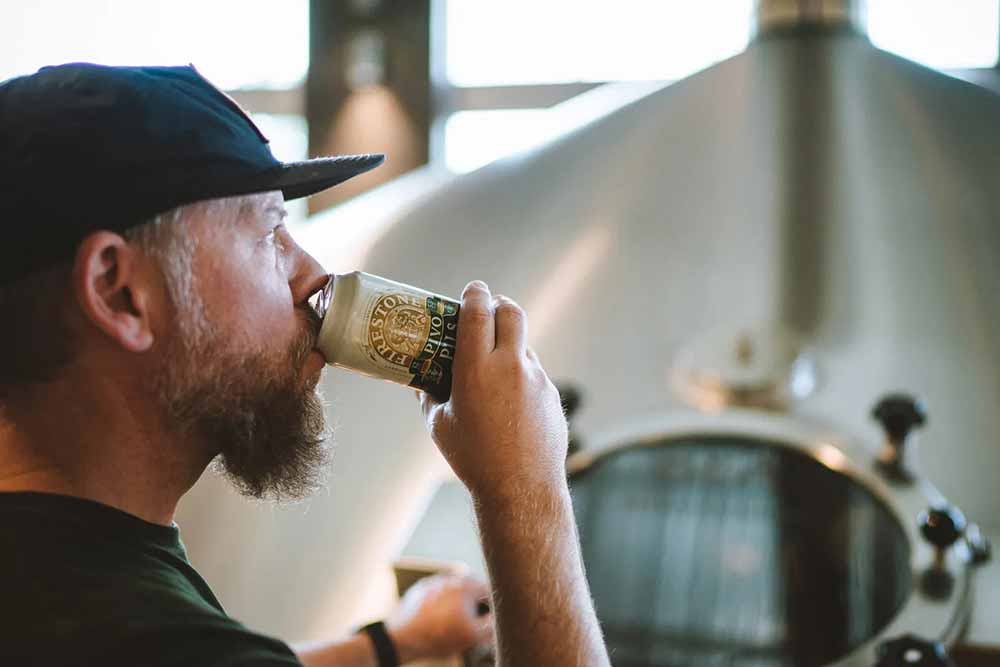
Photography courtesy of Firestone Walker
The Italian pilsner hasn’t entirely exploded in popularity like the hazy IPA or even a slightly steadier style like a kölsch or witbier.
While the Italian pilsner hasn’t grown in popularity in the United States as it has in Italy (there’s a whole holiday named “Tipopils Day” where select bars and restaurants across Italy pour the beer), those dedicated to brewing the style hope it’ll catch on.
“I see it fitting in well with the current beer environment,” says Schnebeck. “While hazy IPA continues to dominate, it’s only a matter of time before people pull back and get a little fatigued. People will want to chill out a little bit with the beer styles they drink but still have that knowledge and appreciation for hop flavor. That’s easy to apply and pick up with the Italian pils.”
As more people seek out new beers, styles, and flavors, Schnebeck says the Italian pils “seems like a natural progression from the intensity of the hazy, juicy IPAs.”
We’re crossing our fingers that he’s right.
“I hope it takes off,” says Schnebeck. “I love drinking it. I try not to have favorites, but it’s what I’ve been going to do for the better part of the year.”
The Best Italian Pilsners to Try Right Now
Tipopils – Birrificio Italiano
Como, Italy
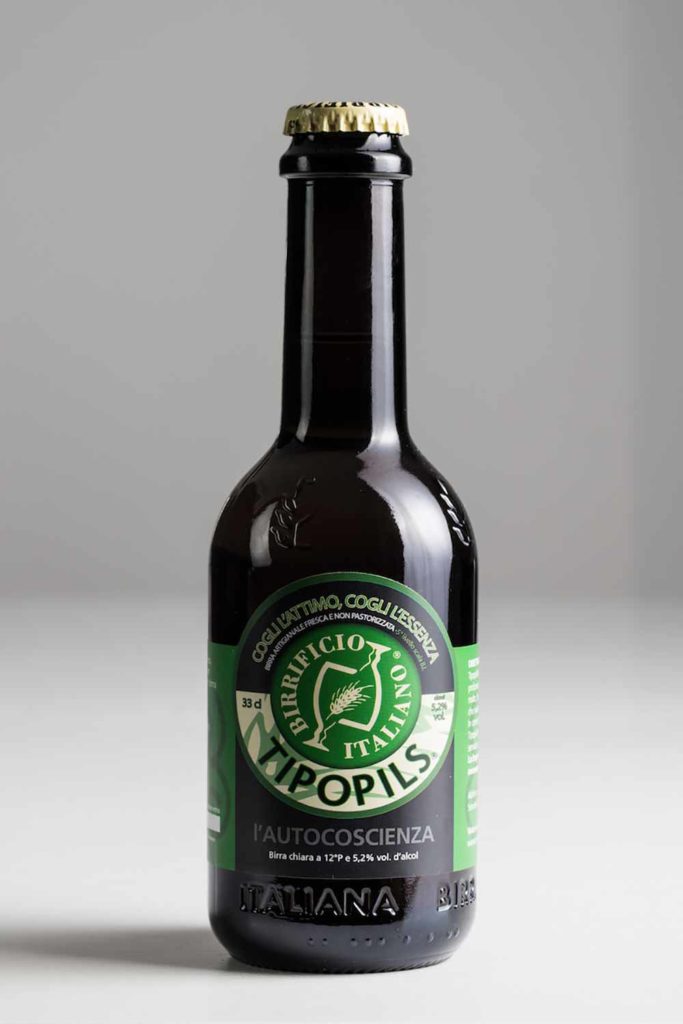
Photography courtesy of Foodbeast
The beer that started it all: Tipopils. Unfortunately, it’s hard to find this beer in America. While the base beer for Tipopils used to be imported by B. United and then dry-hopped in tanks in Connecticut, in 2020, new Italian laws put the kibosh on this. Until those laws change, we might just have to travel to Como, Italy, to try this innovative beer.
Pivo Pils – Firestone Walker
Paso Robles, CA
With Pivo Pils, Brynildson brought the Italian pils to America. Trying this is a must to pay an homage to the style. It’s a beer that’s been around for over thirteen years, winning numerous medals.
Pivo pours beautifully bright and clear with a hefty head of foam and immediate aromas of lemongrass and noble hops.
“When you go to drink Pivo, it’s all about being really crisp and clean,” says Brynildson.
After a massive outcry on the East Coast and Midwest for Pivo Pils to return to draft and cans, Firestone Walker brought this beer into its entire footprint. Currently, you can find the beer using Firestone Walker’s Beer Finder.
Sfizio – Fort Point Beer Co.
San Francisco, CA
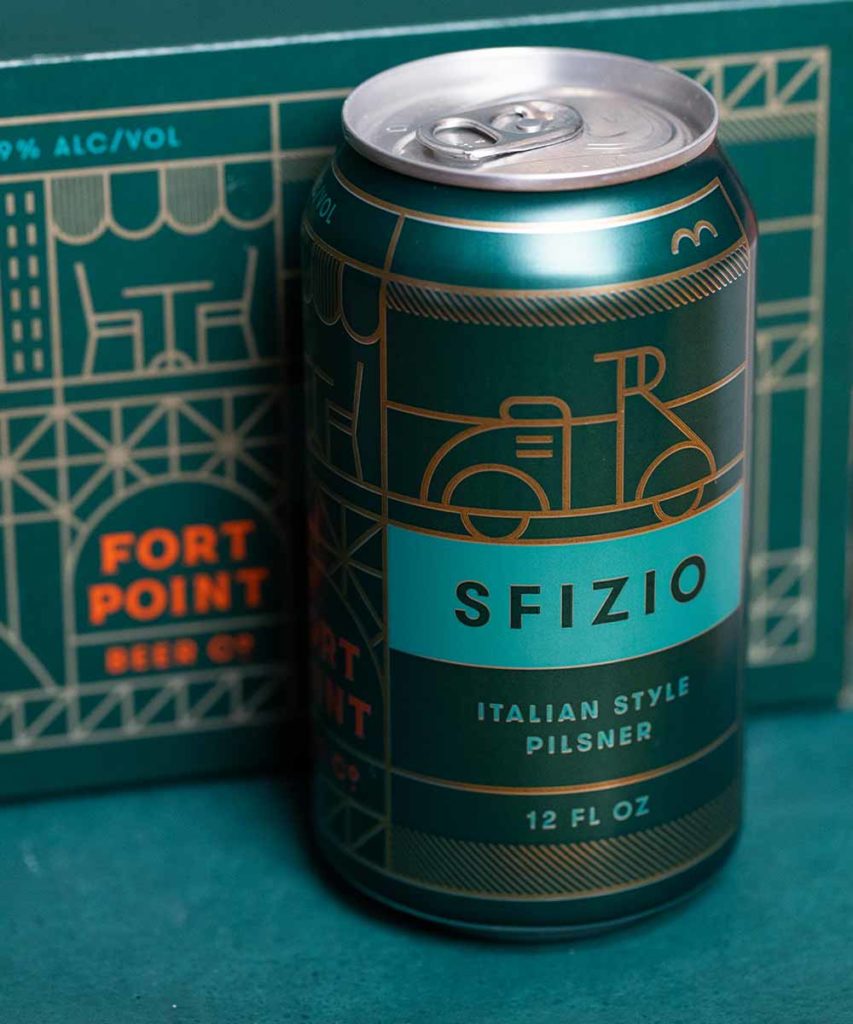
Photography courtesy of Sarah Chorey | Fort Point Beer Co.
Inspired by a few other versions on the list, Schnebeck brewed Sfizio as a light, refreshing complement to the rest of Fort Point’s portfolio. Using a one-hundred percent house Pilsner malt and Hallertau Mittelfrüh and Aurora hops gives this beer its distinct characteristics.
“Sfizio has an aroma of fresh-cut grass with a little bit of menthol and anise in the background. Aurora is just the squeeze of lemon to brighten it up, pique interest, and give that cooling sensation, drinkability, and refreshing quality of [the Italian pils],” says Schnebeck.
Luppolo – Oxbow Brewing Company
Portland, ME
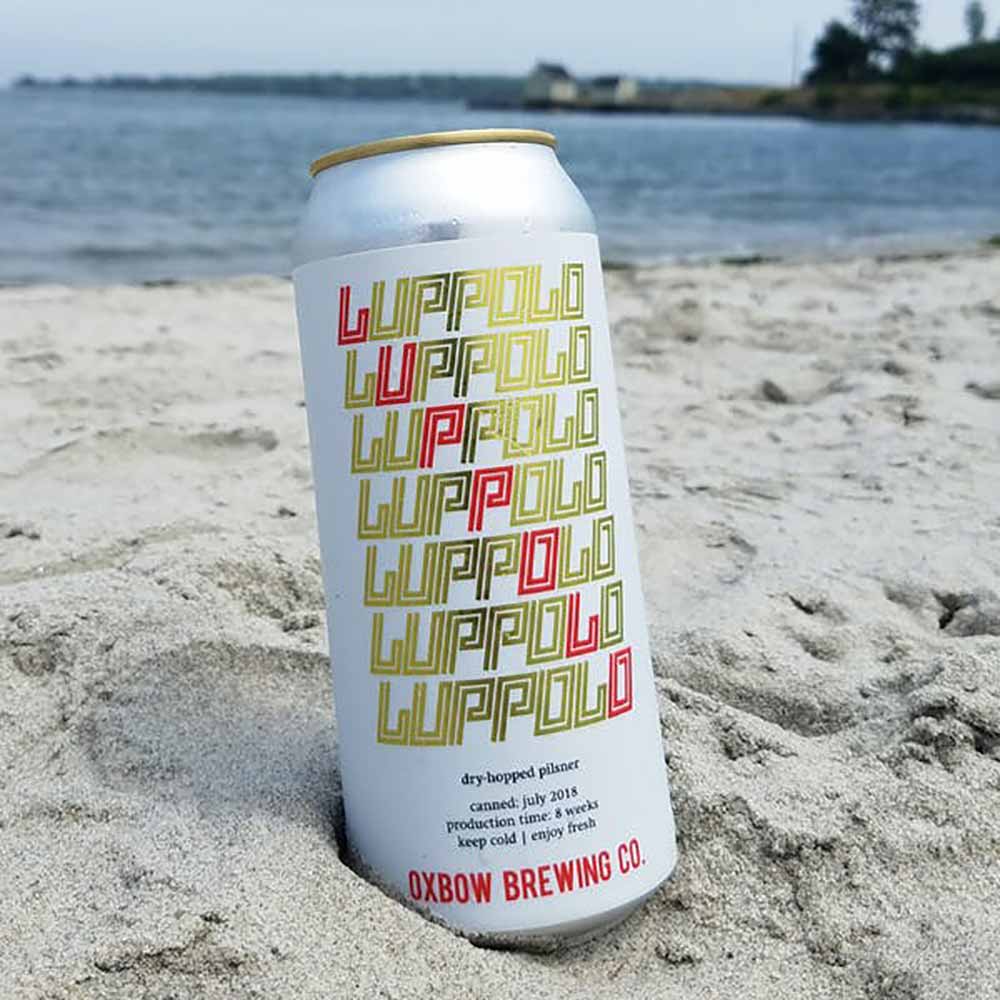
Photography courtesy of Oxbow Brewing
Another early supporter of the Italian pils in America, Tim Adams at Oxbow brews Luppolo with traditional European malts and hops. The unfiltered, dry-hop pilsner is an excellent re-creation of the style.
“Oxbow Luppolo is another obviously influenced by Ago and Italy,” says Brynildson. “I taste that beer and could be in Italy sitting in Ago’s beer garden.”
Terrifica – Wayfinder Beer x Heater Allen Brewing x Modern Times
Portland, OR, x San Diego, CA
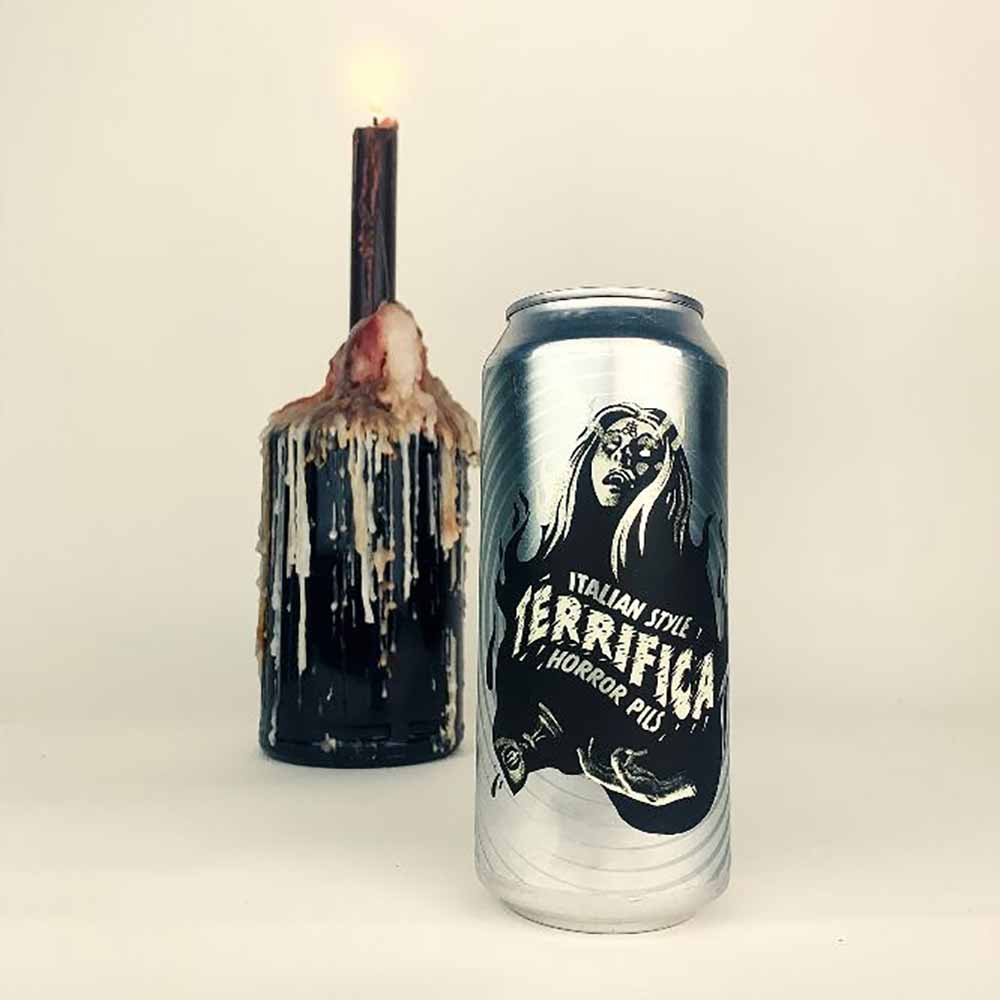
Photography courtesy of BrewRepublic
When first brewing Terrifica, Lisa Allen (former head brewer from Heater Allen), Andrew Schwartz (former commissioner of flavor at Modern Times), Tim Kamolz (former director of brewing operations from Modern Times), and Kevin Davey (former brewmaster from Wayfinder) were inspired by the pilsners they tried in Italy.
To respect the style, they hopped Terrifica with two pounds per barrel of German hops such as Spalt Select and Tettnanger. An additional dry hopping of Polaris and more Tettanger before cold-conditioning gives Terrifica that traditional Czech Pils base but with the Old World hop flavors and aromas. This version is terrifica (sorry, we couldn’t help it).
Agostini Pils – Von Ebert Brewing
Portland, OR
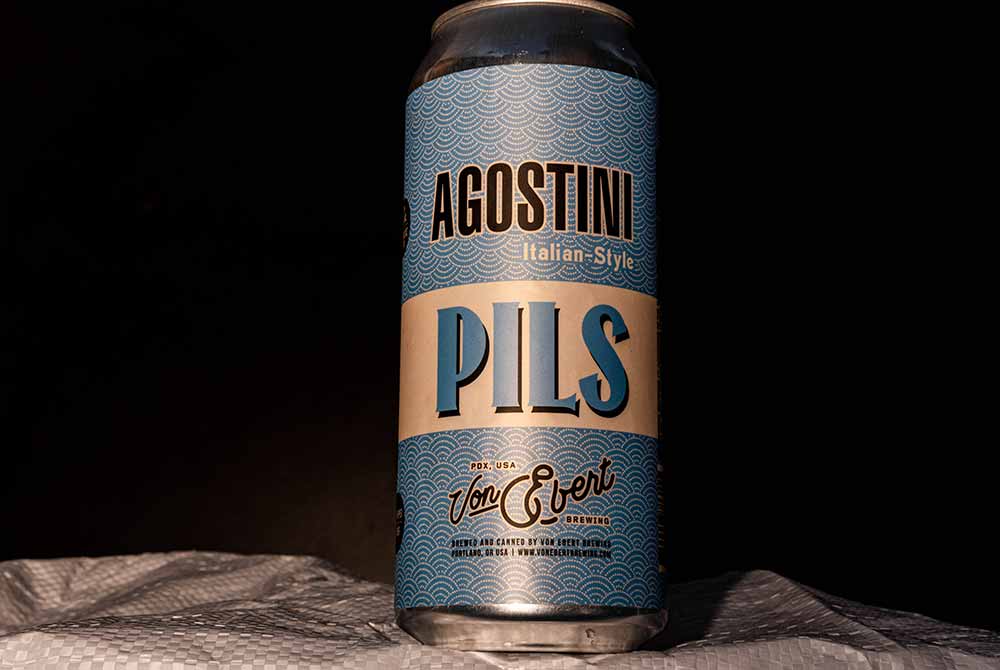
Photography courtesy of Von Ebert Brewing
In a nod to the founder of the Italian pilsner, Von Ebert Brewing’s Italian pilsner is described by Schnebeck as “very minty.” At five percent ABV, Agostini receives a dry-hopping of Styrian Cardinal, which imparts those flavors of orange peel and spearmint.
Il Cielo – Human Robot
Philadelphia, PA
Untappd’s second highest-rated Italian pilsner of all time, Il Cielo from Human Robot includes a dry hop with Tettnang. Il Cielo drinks very refreshing, light, and clean, with a bit of herbaceousness and hoppiness. In fact, Human Robot describes this beer as “just like heaven in a can.”
Birra Portico – Schilling Beer Co.
Littleton, NH
Right behind Il Cielo on Untappd’s list, Birra Portico from Schilling pours a touch hazy, expressing lovely notes of champagne bubbles and lemon verbena. A slow thunderclap of floralness strikes through the middle of the sip, ending with a biscuit crust for a clean and smooth finish.
Fiore – The Seed: A Living Beer Project
Atlantic City, NJ
From a New Jersey-based brewery known more for its elegant mixed-ferm ales and delicate saisons, The Seed makes a pretty darn tasty Italian pilsner. Featuring Rabbit Hill Farms barley along with Magnum, Mittelfrüh, and Saaz hops on the hot side, Fiore also gets a dry hopping of Tradition.
“Snappy and crisp with a bright and full hop profile,” writes The Seed in the beer’s Untappd description. “Fiore showcases a comfortable mix of noble flowers and herbs, a fresh bready malt backbone, and a squeaky clean finish.”
Kinda Pils – Barrique Brewing and Blending
Nashville, TN
As the Nashville-based Barrique kindly points out, Arioli’s genre-defining Tipopils roughly translates to English as “Kind of Pils.” Barrique’s version starts with one hundred percent German Heidelberg Pilsner malt that goes through a double decoction before fermenting low and slow, lagering in oak barrels for seven weeks. A final dry hop toward the end of lagering with German Saphir and Slovenian Celeia gives this beer a truly genre-bending spin.
Barrique describes Kinda Pils as having “a delicate perfume of citrus and herbal hop notes, blanched by the doughy, slightly grassy malt character.”
delicious moments – everywhere
Orange, CA
Hitting above a four on Untappd, delicious moments includes Eraclea Pilsner malt and a dry hop with Saphir. Everywhere has been a brewery on our radar for a while, earning a spot on our list of “The Best New Breweries of 2022” for its pitch-perfect approach to lagers combined with a reverence for its hometown hoppy ales.
We’ve seen them pay homage to German styles such as kölsch and its corresponding kölsch service, so it’s no surprise that they nail another European style with Italian and German influence.
Italian Style Pilsner – Chuckanut Brewery
Bellingham, WA
One of the most-revered lager breweries in the country for over sixteen years, Chuckanut keeps up with the times with its Italian Style Pilsner. Chuckanut’s version pays homage to Tipopils, starting with Italian-grown Pilsner malt before adding a slew of Noble hops—what they call “the star of the show”—Hallertau Perle, Tradition, Tettnanger, and Saaz. “This is a German pilsner on steroids!” writes the brewery in the beer’s Untappd description. “A highly drinkable lager with huge notes of spicy and herbal hops.”
Bright – Burial Beer Co.
Asheville, NC
Respect the day, honor the night. These journeys through mortality, the facing of immense questions of our finite ends. And yet, there shall always remain one reaffirming truth. After the darkness comes the bright light.
Burial always has an almost romantic approach to beer, as you can tell from its iconic beer description, such as this one.
Burial brewer Ryan Riggs designed Bright’s recipe, starting with a blend of pilsner malts and German hops before a slow step-down crash and dry hop of Hallertau Blanc, Huell Melon, and Grunge. Long, long lagering gives this beer time to sparkle, drinking with notes of “strawberry soda, Verdicchio wine, and citrus baked pastry,” according to Burial.
New World Geography – Alma Mader Brewing
Kansas City, MO
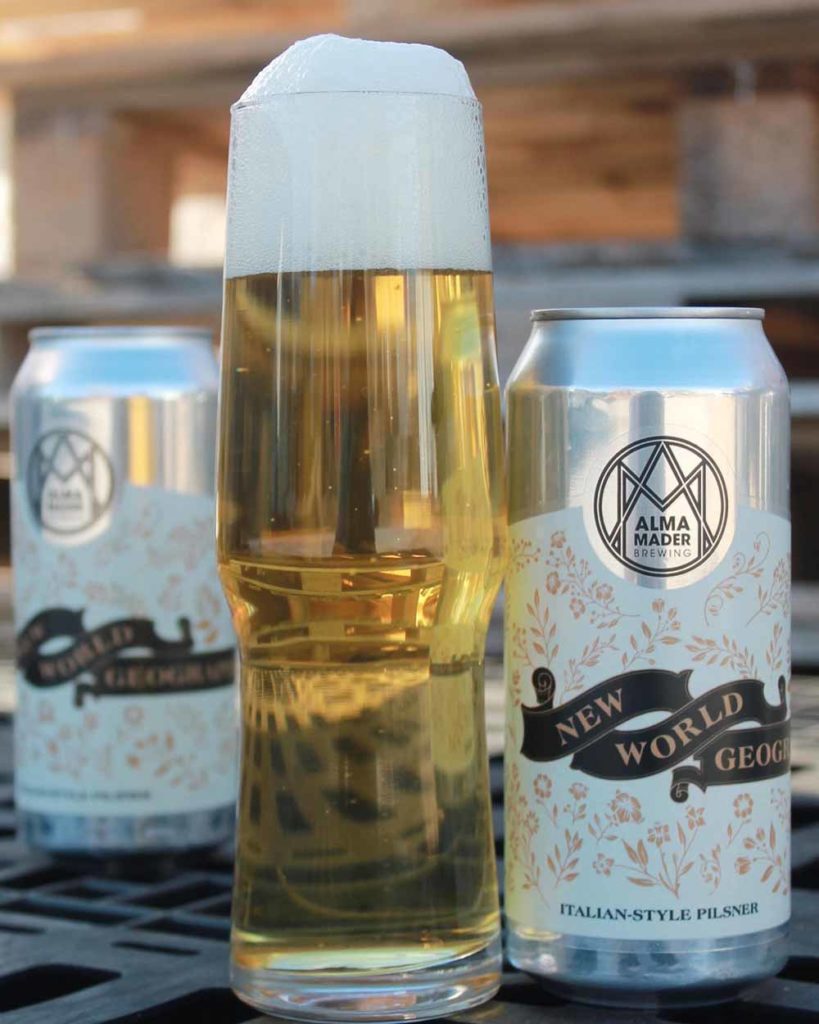
Photography courtesy of @almamaderbrewing | Alma Mader Brewing
One of our “14 Best Breweries of 2022,” Alma Mader’s New World Geography, also made our list of “The 27 Best Beers We Drank in 2022.”
Brewed on the hot side and dry hopped with a blend of Hallertau Mittelfrüh, Saphir, and Saaz, Alma Mader’s Italian pilsner executes that balancing act between a bready base and a buoyancy of bouquets.
An emergence of a new-world style, New World Geography gives you, according to Alma Mader, “herbal, citrusy, crispy bliss that leaves the Old World behind.”

